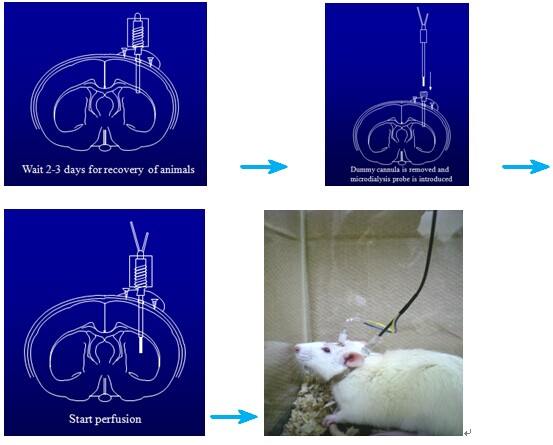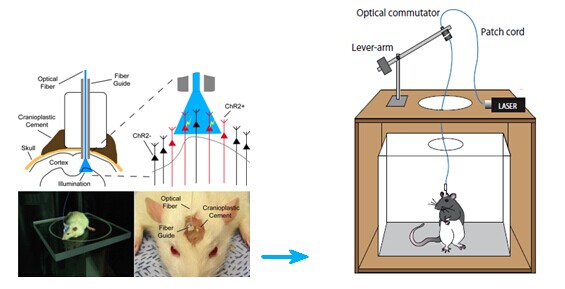Animal anesthesia before surgery is not only to reduce animal pain to meet animal welfare requirements, but also to ensure the smooth operation of animal surgery. At present, injection anesthesia is the most common in animal anesthesia in China. The advantage is that it does not require expensive equipment. It only needs a syringe. However, after the anesthetic is injected into the animal, the animal must be awakened after the liver is metabolized. Death, a small dose of an animal can not enter anesthesia or enter anesthesia is relatively slow. In developed countries, gas-inhalation anesthesia is very common, with the following significant common advantages compared to traditional drug-injected anesthesia:
* Animals enter the anesthesia faster and wake up quickly. Once the anesthesia is stopped, the animal can wake up within 2 minutes.
* The depth of anesthesia is easy to control. If the animal is found to be in poor condition during the operation, the anesthesia can be stopped immediately or the oxygen can be quickly recharged, so the safety is very good;
* Animal morbidity and mortality are low, and the success rate of animal surgery is high;
* More importantly, inhaled anesthetics do not participate in metabolism in the body, almost completely discharged from the alveoli by breathing, and have no effect on the experimental results. The research results are easily recognized internationally.
In specific practical applications, we can clearly see the advantages of isoflurane inhalation anesthesia. Here are some of the advantages of isoflurane anesthesia in some typical animal experiments:
1. Chronic administration of cannula, microdialysis and optical stimulation/physiological signal recording (optogenetics)
The catheter is implanted into the skull. After the animal is restored, the catheter cap is first pulled out, and then the injection inner tube (probe or fiber) is implanted, and the syringe (laser) is connected through a tube (fiber jumper). However, the process of implanting the inner tube (probe or fiber) and the connecting line (fiber patch) (as shown in Figures 1, 2 and 3), although it takes a short time, is a few minutes, if Animals are not anesthetized, animals will struggle, and poor coordination will result in inability to intubate (insert fiber); if it is performed after anesthesia such as sodium pentobarbital or urethane, the operation is easy, but these anesthesia methods last for a long time. , often up to 3-5 hours, is not conducive to the late administration of conscious animals or light stimulation, and additionally increases the side effects caused by the use of these anesthetics, the measured indicators are not accurate, affecting the objectivity of the experimental results and reliability. However, if isoflurane inhalation anesthesia is used, these problems are avoided and the operation is simple. Simply place the animal on the experimental platform and bring an anesthesia mask to start the operation.

Figure 1 Schematic diagram of the cannula implantation process

Figure 2 Schematic diagram of microdialysis probe implantation process

Figure 3 Schematic diagram of the fiber implantation process
2. Deep surgery
Some common thoracotomy or deep surgery, for example, MCAO cerebral ischemia and myocardial ischemia modeling (Figures 4 and 5) for cardiovascular and cerebrovascular studies, animal mortality is often higher, and there are ways to use injection anesthesia. A large relationship, such as excessive anesthesia time, inability to control the depth of anesthesia, abnormal rescue during surgery, slower recovery of the animal, and stronger respiratory inhibition of the anesthetic may lead to this result. However, if isoflurane inhalation anesthesia is used, the negative results caused by injection anesthesia can be avoided, ensuring that the surgical procedure is controlled and smooth, and that the animals are quickly awakened after the operation, greatly reducing the mortality of the animals; And the operation is simple, just place the animal on the experimental platform, with the cover, you can start the operation.


Figure 4 MCAO modeling Figure 5 myocardial ischemia modeling
3. Blood collection process
Blood collection is a common type of technology in animal research. Common blood collection methods include veins, arteries, eyelids, and blood sampling. In these blood collection processes, the traditional method is to directly collect blood by grasping the fixed animal by hand (as shown in Fig. 6), or to collect blood after using anesthesia with ether or injection. However, these methods have certain disadvantages, for example, If the animal is directly grasped, additional stress will be added to the animal (Stress), and a stress response will occur. The blood-related indicators will be affected. If anesthesia is used for anesthesia, the anesthesia time is short. If the blood collection operation is not skilled, it is necessary. Repeated anesthesia, and the ether is very irritating, the body is very uncomfortable after inhalation, the animal's respiratory tract is also very strong, need to be guarded during anesthesia, otherwise the animal is very easy to die. If isoflurane inhalation anesthesia is used, these difficulties are overcome and the operation is simple. Simply place the animal on the experimental platform and bring an anesthesia mask to start the operation. If the blood is collected in batches, the efficiency is very high.

Figure 6 Schematic diagram of blood collection at the tail, blood sampling from the eyelid, and blood sampling from the abdomen
4. Intravenous administration
Methods of administration by injection include muscle, subcutaneous, and intravenous injection. Before the injection, the traditional animal fixation method uses a fixer (as shown in Figure 7). However, even after the animal is fixed, it is often not very compatible, and the tail vein injection operation is difficult, so the success of the one-time injection is successful. The rate is low, and the operation of the fixed animal takes a long time; if the animal is kept anesthetized in order to keep the animal quiet, the injection operation is easy, but the animal anesthesia is too long, and the animal is not allowed to die and cannot be rescued. risk. If you use an isoflurane for anesthesia before injecting the drug, place the animal directly on the experimental platform and bring an anesthesia mask. The animal will be very quiet, which is beneficial to intravenous drug injection, and the work efficiency is greatly improved. After removing the mask, the animal Quickly awakened, there is almost no risk of death, and isoflurane does not participate in metabolism in the body, and does not affect physiological indicators.

Figure 7 tail vein injection (traditional animal fixation)
5. Effects of isoflurane anesthesia and injection anesthesia (sodium pentobarbital, chloralose, urethane, ketamine, propofol) on experimental results
Up to now, there have been many reports on the effects of isoflurane inhalation anesthesia and injection anesthesia (pentabarbital sodium, chloralose, urethane, ketamine, propofol) on the experimental results, typical reports will be provided subsequently... You can refer to the following documents first:
(1) The Impact of Four Different Classes of Anesthetics on the Mechanisms of Blood Pressure Regulation in Normotensive and Spontaneously Hypertensive Rats. M. BENCZE, M. BEHULIAK, J. ZICHA. Physiol. Res. 62: 471-478, 2013
(2) Neuroprotective effects of lactate in brain ischemia: dependence on anesthetic drugs. Horn T , Klein J . Neurochem Int 2013 Jan.
(3) Inhaled carbon dioxide causes dose-dependent paradoxicalbradypnea in animals anesthetized with pentobarbital, but not with isoflurane or ketamine. Yehuda Ginosar, Nathalie Corchia Nachmanson, Joel Shapiro, Charles Weissman, Rinat Abramovitch, Respiratory Physiology & Neurobiology 217 (2015) 1–7 .
(4) Effect of pentobarbital and isoflurane on acute stress response in rat. Xue-Yan Wu, Yu-Ting Hu et al. Physiology & Behavior 145 (2015) 118–121.
Cosmetics are compound mixtures made from various raw materials after reasonable blending and processing. There are many types of cosmetics raw materials with different properties. According to the raw material properties and uses of cosmetics, it can be roughly divided into two categories: base raw materials and auxiliary raw materials. The former is a main raw material of cosmetics, which occupies a large proportion in cosmetic formulations, and is the main functional substance in cosmetics. The latter is responsible for shaping, stabilizing or imparting color, fragrance and other characteristics to cosmetics. These substances are not used in large amounts in cosmetic formulations, but are extremely important. Cosmetics are chemical mixtures made of natural, synthetic or extracted substances with different functions as raw materials and processed through production processes such as heating, stirring and emulsification.
Collagen peptide, Arbutin, Coenzyme Q10, GSH, Cosmetic Raw Materials, lipoic acid
Xi'an Gawen Biotechnology Co., Ltd , https://www.ahualynbios.com